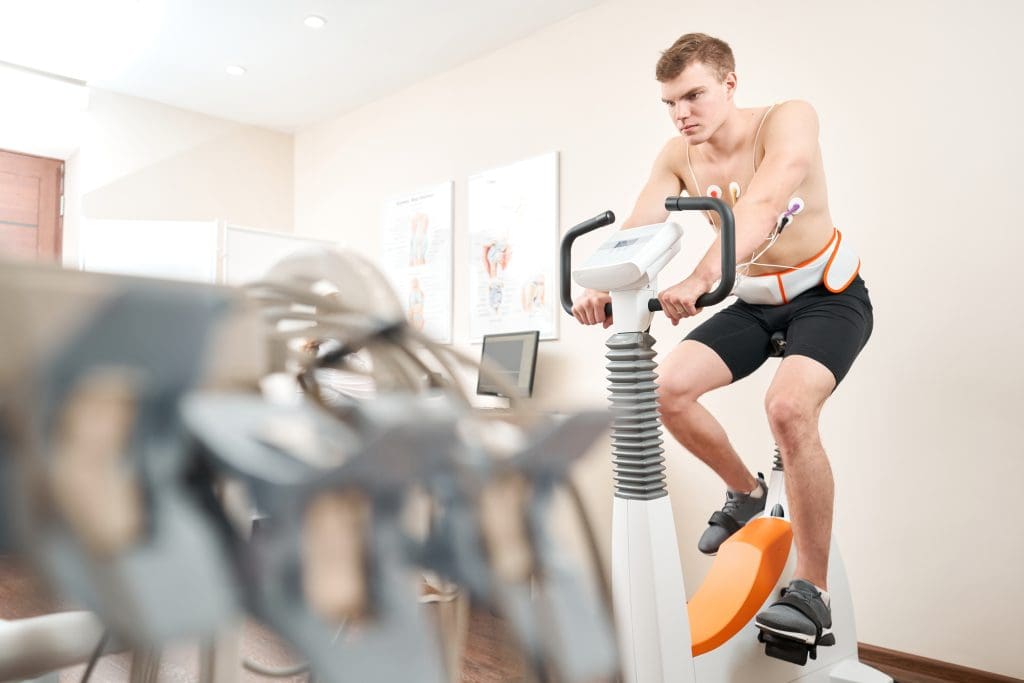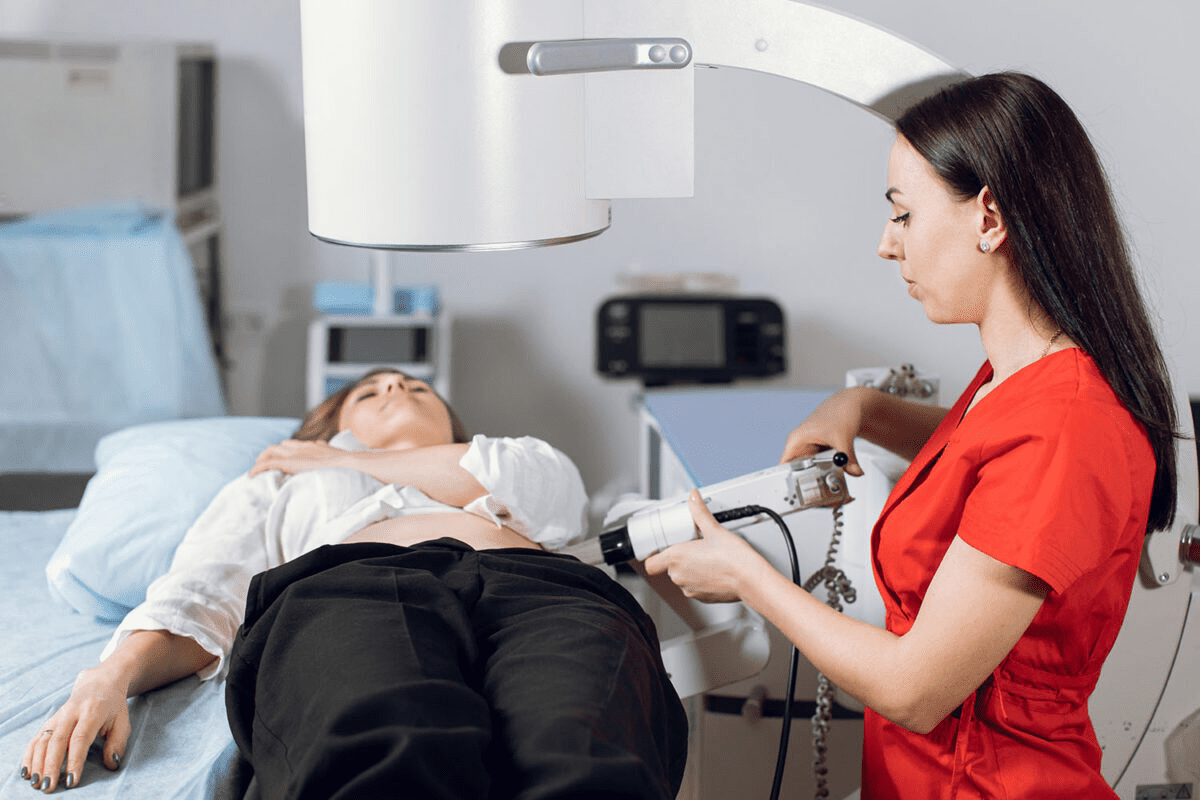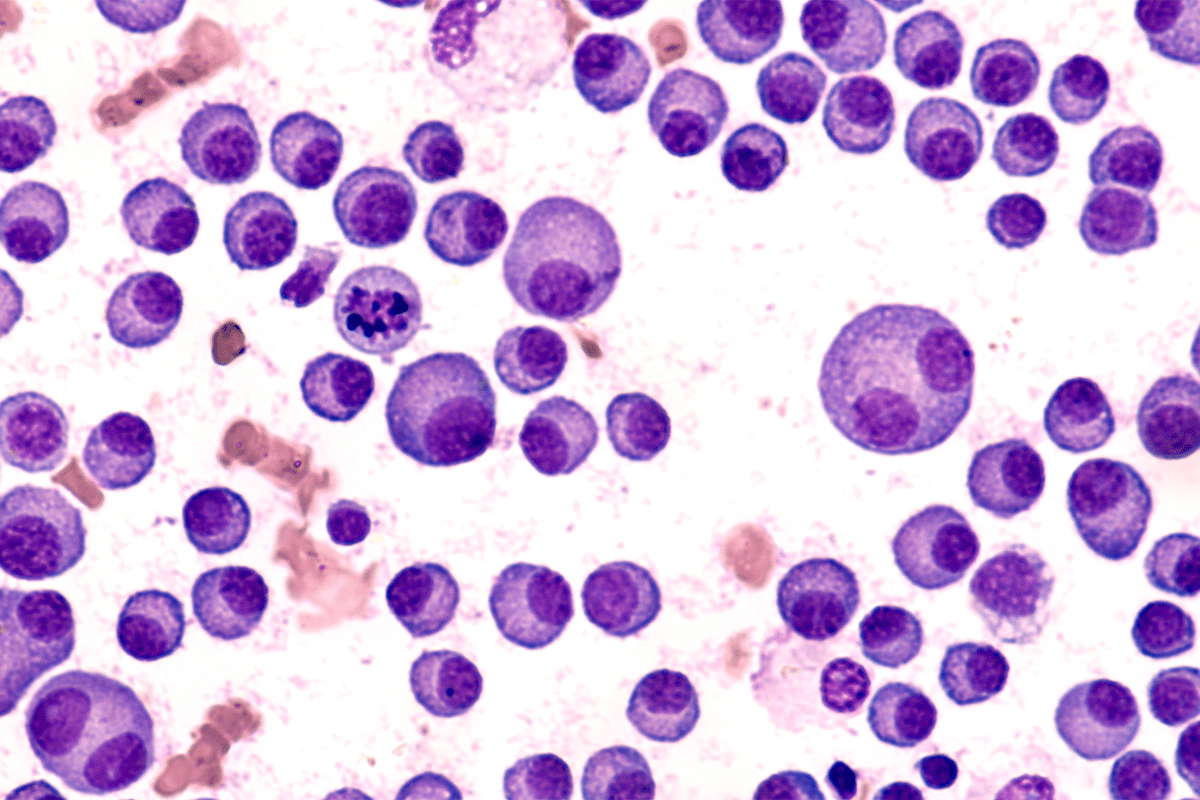Last Updated on November 27, 2025 by Bilal Hasdemir
A nuclear stress test checks how well your heart works by looking at blood flow. It’s safe, but there are steps to take after to stay safe.
Knowing what to skip after an nuclear stress test helps you recover well. Some things can mess up the test or cause problems.
Key Takeaways
- Understand the importance of post-test precautions
- Learn about activities to avoid after a nuclear stress test
- Discover how to minimize possible risks with the test
- Find out what substances or actions could mess up test results
- Gain insights into ensuring a smooth recovery after the test
Understanding Nuclear Stress Tests

A nuclear cardiac stress test is a tool doctors use to check your heart’s health. They do this by seeing how your heart works when it’s stressed, usually through exercise or medicine.
What is a Nuclear Stress Test?
A nuclear stress test, or myocardial perfusion imaging, uses a tiny bit of radioactive material. It shows how well your heart muscle pumps and if any areas don’t get enough blood.
This test is key for spotting and tracking coronary artery disease. It gives doctors insights into your heart’s function and helps them decide on treatments.
How the Procedure Works
For a nuclear cardiac stress test, a healthcare provider injects a radioactive tracer into your blood. This tracer sticks to your heart muscle based on blood flow. Then, you’ll have imaging tests, like a gamma camera, to see your heart at rest and after stress.
The images from the test show doctors where your heart might not be getting enough blood. This could mean blockages or damage.
| Test Phase | Description | Imaging Purpose |
| Resting Phase | Initial images are taken while you are at rest. | To assess baseline heart function. |
| Stress Phase | Images are taken after your heart is stressed, usually through exercise or medication. | To evaluate heart function under stress and compare to resting state. |
By looking at images from both phases, doctors can better diagnose and manage heart issues.
Knowing about nuclear cardiac stress tests can ease your worries. It helps you understand what to expect during and after the test.
The Danger of Nuclear Stress Test: Understanding the Risks
Nuclear stress tests use radioactive tracers, which can be a worry. These tests use small amounts of radioactive materials to see the heart. The most used tracers are thallium-201 (Tl-201) and technetium-99 (Tc-99).
Radiation Exposure Concerns
Patients getting nuclear stress tests worry about radiation. The amount of radiation depends on the test and the tracer dose. Tl-201 decays more slowly than Tc-99, which changes how long you’re exposed to radiation.
The American Heart Association says the test’s radiation is like years of natural background radiation. This worries patients and doctors about long-term risks, like cancer.
| Radioactive Tracer | Half-Life | Typical Dose |
| Thallium-201 (Tl-201) | 73 hours | 3-4 mCi |
| Technetium-99 (Tc-99) | 6 hours | 25-30 mCi |
Common Misconceptions About Risks
Many think nuclear stress tests are too risky. But, the doses are set to keep exposure low while getting good images.
“The benefits of nuclear stress tests in diagnosing and managing heart disease often outweigh the risks associated with radiation exposure.” – American College of Cardiology
Some think you’ll be radioactive for a long time. But, the tracers used in these tests decay fast. Most patients don’t pose a risk to others soon after the test.
Knowing the risks and benefits of nuclear stress tests helps patients decide. It’s key to talk to your doctor about any worries.
Immediate Post-Test Restrictions
Knowing what to do after a nuclear stress test is key to avoiding risks and recovering well. Your doctor will tell you what you can and can’t do. This depends on the radioactive tracer used and how much.
Avoid Strenuous Physical Activity
One big rule is to stay away from hard physical work. This means no heavy lifting, bending, or intense exercise. Such actions can harm your body and cause problems. Rest and avoid hard activities for at least 24 hours after the test.
Don’t Skip Your Recovery Period
The time after a nuclear stress test is very important. It’s when your body gets rid of the radioactive tracer. Don’t skip or rush this time, as it can expose you to too much radiation. Always follow your doctor’s advice on how long to rest and what to avoid.
| Activity | Recommended Avoidance Period |
| Strenuous Exercise | 24 hours |
| Hot Showers/Saunas | 4-6 hours |
| Close Contact with Pregnant Women and Children | 24 hours |
Avoid Hot Showers and Saunas
It’s also important to avoid hot showers and saunas. The heat can make your blood vessels expand, which might lower your blood pressure. Stay away from hot showers and saunas for 4 to 6 hours after the test.
“Patients should be aware of the risks from nuclear stress tests and follow the post-test rules carefully to avoid these risks.”
American Heart Association
By following these rules right after the test, you can greatly lower the risks. This ensures a safe and effective recovery.
Hydration and Fluid Intake Guidelines
Drinking enough water is key after a nuclear stress test. It helps get rid of the radioactive material from your body. Proper hydration also reduces the risk of side effects.
Why You Shouldn’t Restrict Water Intake
Drink lots of water in the 24 hours after your test. Try for six to eight 8-ounce glasses of water. This helps your body get rid of the radioactive tracer faster.
Staying hydrated also helps you recover from the test’s physical effort. It prevents dehydration, which can cause dizziness, headaches, or fatigue.
Beverages to Avoid After Your Test
Water is the best drink after a nuclear stress test. But, there are some drinks to limit or avoid. Caffeine and alcohol can make you dehydrated if you don’t drink enough water.
- Avoid too much caffeine, as it can raise your heart rate and blood pressure.
- Don’t drink too much alcohol, as it can dry out your body.
- Choose water or other non-caffeinated, non-alcoholic drinks instead.
By following these hydration tips, you can recover well from the test. And you’ll reduce the chance of side effects. Always check with your healthcare provider for advice that fits your needs.
Medication Considerations After Your Test
After a nuclear stress test, knowing your meds is key. The test uses special tracers to check your heart. Some medicines can mess with these tracers or change the test’s findings.
Don’t Resume Certain Medications Without Approval
Don’t start taking some meds again without your doctor’s okay. Some might need to be stopped or changed. This ensures the test shows your heart’s real state and keeps you safe.
- Beta-blockers: These might be held off to get a true heart rate during the test.
- Nitrates: Your doctor might tell you to stop nitrates before the test to avoid changing the results.
- Certain anti-anginal medications: Drugs for angina might need to be adjusted or stopped temporarily.
Medications That May Interact With Radioactive Tracers
Some meds can react with the tracers in nuclear stress tests. Tell your doctor about all your meds, including:
- Over-the-counter (OTC) supplements: Some supplements can affect the test or mix with the tracers.
- Herbal remedies: Herbal products might mess with the tracers or the test results.
- Prescription medications: Let your doctor know about all prescription drugs, as some might need adjusting or stopping.
To keep you safe and get accurate test results, remember to:
- Tell your healthcare provider about all meds, supplements, and herbal remedies you’re taking.
- Follow your doctor’s advice on meds after the test.
- Ask any questions or share concerns about your meds with your healthcare provider.
Managing Nuclear Stress Test Side Effects
Knowing about the side effects of a nuclear stress test can ease worries and help with recovery. These tests are important for checking heart health, but knowing the possible side effects is key for good care after the test.
Common Side Effects to Expect
Most people have mild side effects after a nuclear stress test. Common ones include:
- Headache
- Dizziness
- Nausea
- Chest pain
- Soreness at the injection site
These effects usually go away quickly. But, it’s important to watch for them and tell your doctor if you have any worries.
Don’t Ignore These Warning Signs
Even though most side effects are mild, some signs need quick medical help. Look out for:
- Severe chest pain or discomfort
- Shortness of breath
- Severe headache or dizziness
- Rapid or irregular heartbeat
If you see any of these, get help right away.
Headaches After Nuclear Stress Tests
Headaches are a common side effect after a nuclear stress test. Staying hydrated and resting can help. If your headache doesn’t go away or is very bad, talk to your doctor.
Handling side effects from nuclear stress tests well needs awareness, watching, and sometimes medical help. By knowing what to expect and how to act, patients can get through the recovery better.
Radiation Safety Precautions
To keep you and others safe, follow these steps after a nuclear stress test. The tracer will leave your body through urine and stool over a few days.
Don’t Spend Extended Time With Vulnerable Populations
Stay away from young kids, babies, and pregnant women for 1 to 2 days. This reduces their exposure to the tracer in you. Keeping a safe distance and limiting contact greatly lowers their radiation risk.
Radioactive Tracer Elimination: What Not to Do
Drink lots of water to help get rid of the tracer. Don’t cut back on fluids, as it slows down the process. Here are some tips:
- Drink at least 8 to 10 glasses of water a day.
- Stay away from caffeine and alcohol, as they can make you lose more water.
- Go to the bathroom often.
Doctors say, “Drinking enough water is essential for getting rid of the tracer.”
“Drinking enough water helps flush out the radioactive material, lowering the risk of long-term exposure.”
Nuclear Medicine Specialist
| Activity | Recommendation | Reason |
| Hydration | Drink plenty of water | Helps eliminate radioactive tracer |
| Interaction with Vulnerable Populations | Avoid close contact | Reduces radiation exposure to others |
| Caffeine and Alcohol Consumption | Avoid or limit | Can act as diuretics, potentially slowing tracer elimination |
By taking these precautions, you can lower radiation risks for yourself and others. If you’re worried or have questions, talk to your doctor for advice.
Chemical vs. Nuclear Stress Tests: Different Aftercare Needs
Chemical and nuclear stress tests are used to check the heart. But, they need different care after the test. Knowing these differences helps patients recover safely and smoothly.
Understanding Chemical Stress Tests
Chemical stress tests use medicine to make the heart work hard, like exercise. This is good for people who can’t exercise because of health issues.
Key aspects of chemical stress tests include:
- Use of medication to induce stress
- No physical exercise required
- Monitors heart function under stress
Comparing Recovery Guidelines
Recovery times for chemical and nuclear stress tests vary. Chemical stress tests’ effects last a few hours.
| Test Type | Recovery Time | Post-Test Instructions |
| Chemical Stress Test | A few hours | Resume normal activities once medication effects wear off |
| Nuclear Stress Test | 24-48 hours | Avoid close contact with pregnant women and children; drink plenty of water |
Don’t Confuse Aftercare Instructions Between Test Types
It’s key to follow the aftercare advice from your doctor. Mixing up these instructions can cause problems or ignore important care steps.
Knowing the aftercare needs for chemical and nuclear stress tests helps patients. It ensures they recover well and get accurate test results.
When to Contact Your Doctor After a Nuclear Stress Test
After a nuclear stress test, it’s important to know when to seek medical help. The test checks your heart health. But, some symptoms after the test might mean you need to see a doctor right away.
Warning Signs That Require Medical Attention
If you notice any of these symptoms after your test, call your doctor:
- Severe chest pain or discomfort
- Difficulty breathing or shortness of breath
- Severe headache or dizziness
- Pain or discomfort in the arms, back, neck, jaw, or stomach
- Unusual or severe fatigue
Seek medical help right away if your symptoms get worse instead of better. Your doctor will check if these symptoms are from the test or if they mean you have a serious issue.
Don’t Skip Your Follow-up Appointment
After your test, you’ll have a follow-up with your doctor. Don’t miss this appointment. It’s a chance for your doctor to:
- Explain the test results in detail
- Talk about any more tests or treatments you might need
- Answer any questions or concerns you have
Going to your follow-up helps make sure you get the right care and advice based on your test results.
Returning to Normal Activities: Timeline and Restrictions
Knowing when you can go back to normal after a nuclear stress test is key. Most people can start their daily routines right after the test. But, it’s important to follow some rules to stay safe and healthy.
First 24 Hours: What to Avoid
In the first 24 hours, it’s best to avoid certain things. Strenuous physical activity can be too hard on your heart. Also, hot showers and saunas can make your blood vessels expand, which might cause problems.
Try to avoid heavy lifting and bending too. These can raise your blood pressure and heart work. Make sure to drink water, but don’t overdo it.
Gradual Return to Regular Activities
Once the first 24 hours pass, you can start getting back to your usual activities. But, listen to your body and don’t overdo it. If you feel unusual symptoms like chest pain, dizziness, or trouble breathing, get help right away.
| Activity | Recommended Waiting Period | Notes |
| Strenuous Exercise | 24-48 hours | Avoid high-intensity workouts |
| Hot Showers/Saunas | 24 hours | Wait at least a day before resuming |
| Heavy Lifting/Bending | 24 hours | Avoid heavy physical exertion |
By sticking to these rules and paying attention to how you feel, you can recover safely and well after your nuclear stress test.
Special Populations: Additional Precautions
The recovery from a nuclear stress test can differ a lot among various patient groups. The elderly and those with kidney disease often need extra care. This ensures a safe and effective recovery for them.
Guidelines for Elderly Patients
Elderly patients might take longer to recover from a nuclear stress test. This is because they have less physical strength and may have other health issues. It’s important for them to follow a gentle recovery plan. They should avoid hard activities and get plenty of rest.
Considerations for Patients with Kidney Disease
Patients with kidney disease need special attention. Their kidneys may take longer to clear the radioactive tracer used in the test. Drinking plenty of water is key for these patients. But, they should talk to their doctor about how much water to drink to avoid harming their kidneys.
Elderly patients and those with kidney disease should listen carefully to their doctor. They should follow their doctor’s advice on medication, follow-up appointments, and any specific care instructions after the test.
Managing Anxiety and Stress After Your Test
Feeling stressed or anxious after a nuclear stress test is common. The wait for your results can be tough. But, there are ways to handle these feelings.
Don’t Overthink Your Results
Waiting for test results can be a big stress. It’s important to avoid excessive speculation about your health. Stay in the present and focus on your health.
- Practice relaxation techniques such as deep breathing or meditation.
- Engage in activities that distract you from anxiety, such as reading or spending time with loved ones.
- Limit your exposure to stressful news or social media.
Healthy Coping Mechanisms
Using healthy coping mechanisms can lower your stress. Try these in your daily life:
- Physical Activity: Gentle exercises like walking can help reduce anxiety.
- Mindfulness Practices: Techniques such as yoga or tai chi can promote relaxation.
- Social Support: Reach out to friends, family, or support groups to share your feelings.
By using these strategies, you can manage your anxiety and stress better. It’s okay to get help if you feel overwhelmed.
Conclusion
After a nuclear stress test, it’s key to follow certain steps for a smooth recovery and accurate results. This conclusion summarizes the main points from our discussion on post-test care.
A stress test summary shows that avoiding hard activities, managing meds, and staying hydrated are vital. Also, knowing about possible side effects and reducing radiation exposure can ease worries.
An aftercare summary stresses the need for a slow recovery, avoiding certain drinks, and not starting some meds without doctor’s okay. By doing these things, patients can stay safe and get accurate test results.
Understanding and sticking to these post-test precautions helps reduce risks and boosts the benefits of the test. For more advice and concerns, always talk to a healthcare expert.
FAQ
What is a nuclear stress test and how does it work?
A nuclear stress test uses a small amount of radioactive material to check the heart’s function. A radioactive tracer is injected into the bloodstream. This tracer is then absorbed by the heart muscle.
The tracer emits radiation that a special camera detects. This provides images of the heart’s blood flow.
What are the risks associated with nuclear stress tests?
The risks include radiation exposure and allergic reactions to the tracer. There’s also a chance of kidney damage in those with pre-existing kidney disease.
What precautions should I take after a nuclear stress test?
After the test, avoid strenuous activity and hot showers. Stay hydrated by drinking lots of water. Also, skip caffeinated and carbonated drinks.
Can I resume my medications after a nuclear stress test?
Don’t start taking certain medications without your doctor’s okay. Some can interact with the tracer.
What are the common side effects of a nuclear stress test?
Side effects include headaches, dizziness, and fatigue. Some may have an allergic reaction to the tracer.
How long does it take to eliminate the radioactive tracer from my body?
The tracer is usually gone in a few hours to days. Drinking water helps flush it out.
Can I be around vulnerable populations after a nuclear stress test?
Avoid being around pregnant women, children, and those with weak immune systems for a few hours after.
What is the difference between a nuclear stress test and a chemical stress test?
A nuclear stress test uses radioactive material. A chemical stress test uses medication to mimic exercise. Aftercare for each test is different.
When should I contact my doctor after a nuclear stress test?
Contact your doctor if you have chest pain, shortness of breath, or dizziness. Also, don’t miss your follow-up appointment.
How long does it take to return to normal activities after a nuclear stress test?
You can usually go back to normal activities in 24 hours. But avoid hard exercise and follow your doctor’s advice.
Are there any special precautions for elderly patients or patients with kidney disease?
Elderly patients and those with kidney disease need extra care. Your doctor will give specific advice based on your needs.
How can I manage anxiety and stress after a nuclear stress test?
Try relaxation techniques like deep breathing, meditation, or yoga. It’s also key to follow your doctor’s instructions and keep your follow-up appointment.






